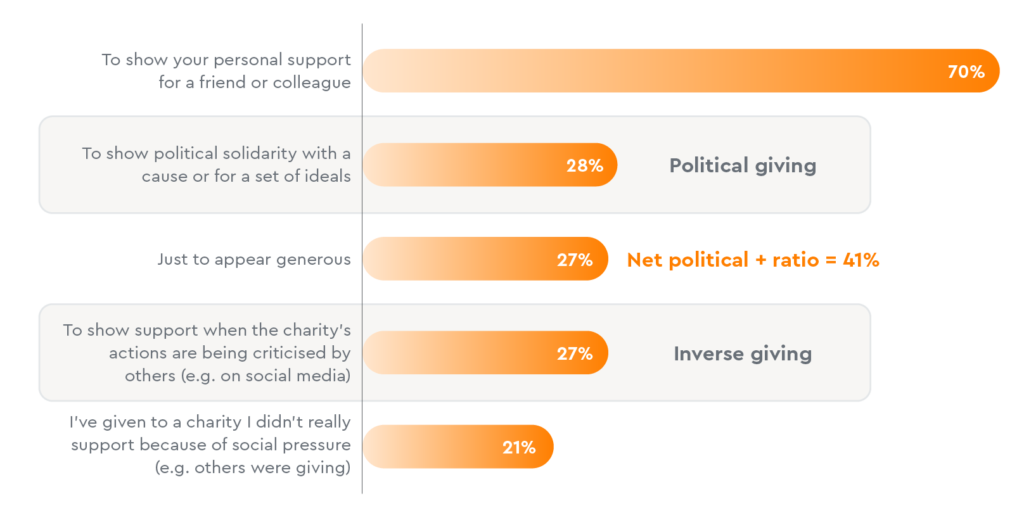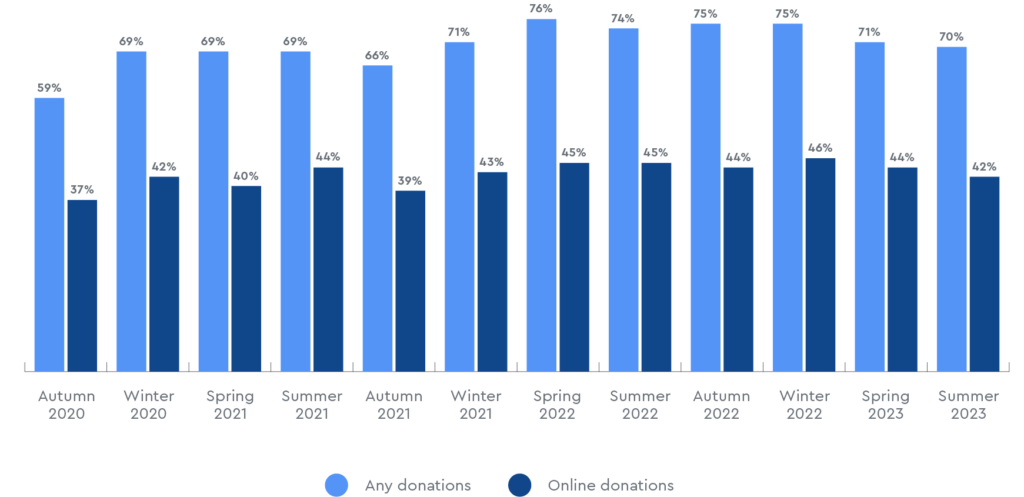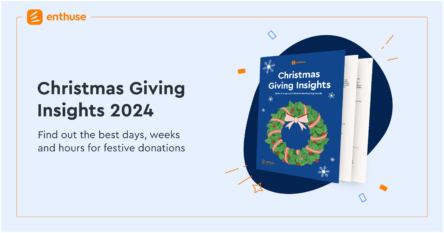
Summer is upon us and that means the latest Donor Pulse report is available to keep your charity abreast of all the latest supporter insights.
This is the twelfth edition of our quarterly Donor Pulse research, which means we now have three years’ worth of donor insights to help inform your campaigns. In the latest instalment, the research looks at the impact of the cost of living crisis on donations and fundraising. More than that though, the report looks at the phenomenon of ‘inverse giving’ where people donate to a charity in response to criticism of a cause in the news. The report also delves into the state of play for recurring donations.
Let’s begin!
Inverse giving
One of the most interesting findings from the latest Donor Pulse research is that half of Gen Z (48%) has donated to charity in response to criticism in traditional or social media. This trend, known as inverse giving, shows that negative headlines can potentially galvanise support for charities, with donors coming to their defence.
While Gen Z is the most likely to donate as a reaction to criticism, more than a quarter of the public (27%) overall say they feel motivated to do this, so it’s not just the younger generations that behave this way. Traditionally, the thinking has been that getting positive headlines behind a cause has been a great driver for donations. And while there is truth to this theory (more than a quarter of people (28%) have donated to show political solidarity because of positive coverage) it seems that donations can just as easily be inspired by criticism too.

Cost of giving easing
The research shows that economic pressure is starting to ease. Although 54% of the public say they feel worse off than six months ago, this is down from 60% three months ago. And 17% say they feel better off, up from 13% last quarter. This means those feeling worse off has been tracking down since Autumn 2022 and those feeling better off is trending upwards. Finances are still a concern but the public appears to have adapted their household budgets and is spending accordingly.
The number of people giving has remained broadly flat over the quarter at 70%. Just a 1 point percentage drop from Spring, so from a seasonal perspective, giving is holding up well. Under 40’s are the most generous with 73% donating in the last quarter (75% for Gen Z) and 68% of over 40’s giving. That generosity gap between under and over 40’s is closing however, having fallen from 9% to 5% in the last year.
Looking at household income, the growing stability in giving is seen in the majority of income groups. The only exception is the highest earning households, who will perhaps be feeling the pressure of higher interest rates on bigger mortgages.
- 58% of those earning £20,000 gave (57% last quarter)
- 71% of those earning £20,000 – 40,000 donated (72% three months ago)
- The £40,000 – 60,000 bracket remained the same with 78% giving
- The £60,000+ households were the only group to show a significant change with 77% donating, down from 82% last quarter

“The economy is challenging, particularly with the latest rise in interest rates, but donations are stabilising and intent to give over the next three months looks positive. The data suggests that the public is adapting to its economic circumstances and finding the money to generously donate to good causes is part of that it.”
“The concept of ‘inverse giving’ is a really interesting one for charities because it shows that taking a bold stance on social issues may be rewarded with donations, whether it receives a positive or negative reaction in the media – provided charities are in tune with the sentiment of their supporters. Good causes may want to think about ‘charity as a service’ too. We know that subscription models are popular and small gifts in return for recurring donations could help convert one-off supporters to regular donors.”
Chester Mojay-Sinclare, CEO & Founder, Enthuse
Recurring churn
Regular giving looks stable for good causes with one in four (27%) people saying they have done so. In terms of age breakdown, 31% of Gen Z and 30% of those 65 and over make a regular donation, showing that there’s appetite to get involved across a range of ages. When it comes to reasons for churn, many would assume this would be due to banking or card issues, but only 15% of people flagged this as the reason. In fact nearly double the amount of people (29%) say they have cancelled a regular donation because they feel disconnected from the charity.

It’s clear from the research that donors want up-to-date comms. 28% of regular donors stated that they are keen to receive newsletters from charity in order to hear the latest updates. The idea of receiving small gifts or offers in exchange for regular giving is seen as a good incentive and opens up the concept of charity as a service. 1 in 5 (21%) said this would be of interest, rising to nearly a third (31%) of Gen Z.
While the economy is challenging, many people have now acclimatised to the cost of living – so donations are still a part of people’s spending plans. Charities should feel encouraged by the fact that being bold on issues relevant to their cause could inspire donations, regardless of the reaction in the press or on social media. Additionally, the data tell us that regular communications and small gifts could be a great way to build those supporter relationships into something more long-lasting.
If you’re interested in finding out more about donor behaviour, then download the full Donor Pulse Summer report for free.









